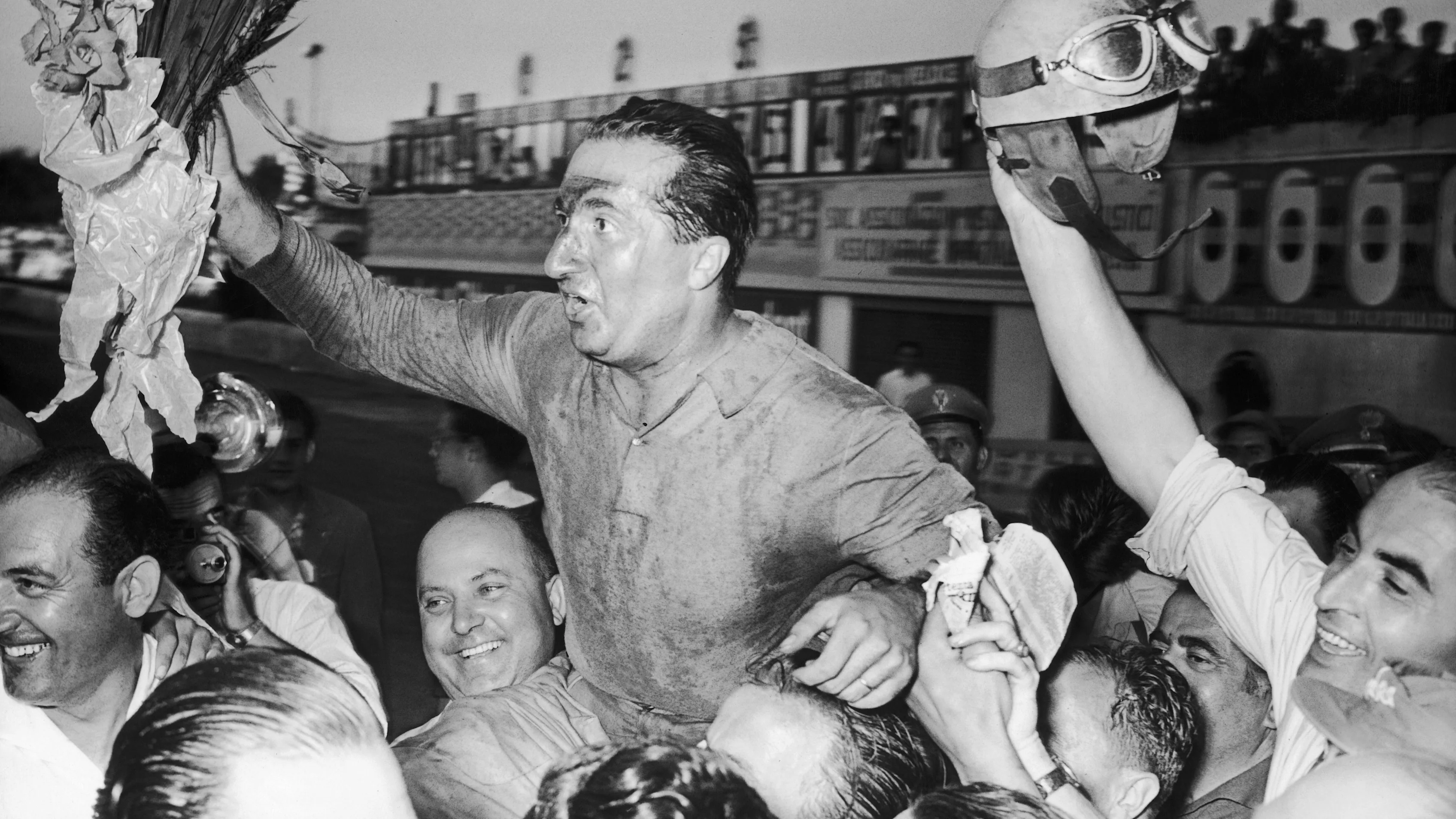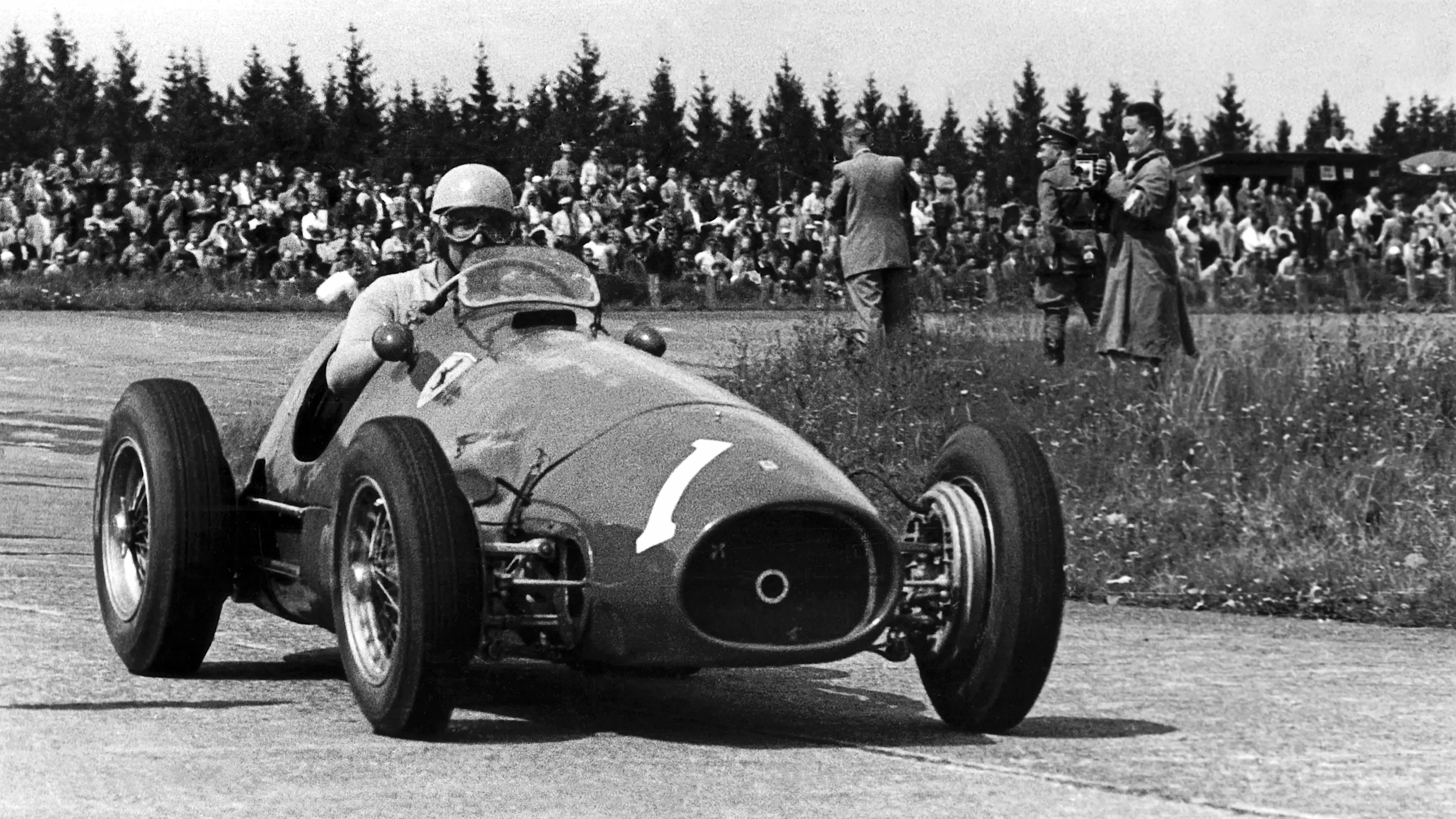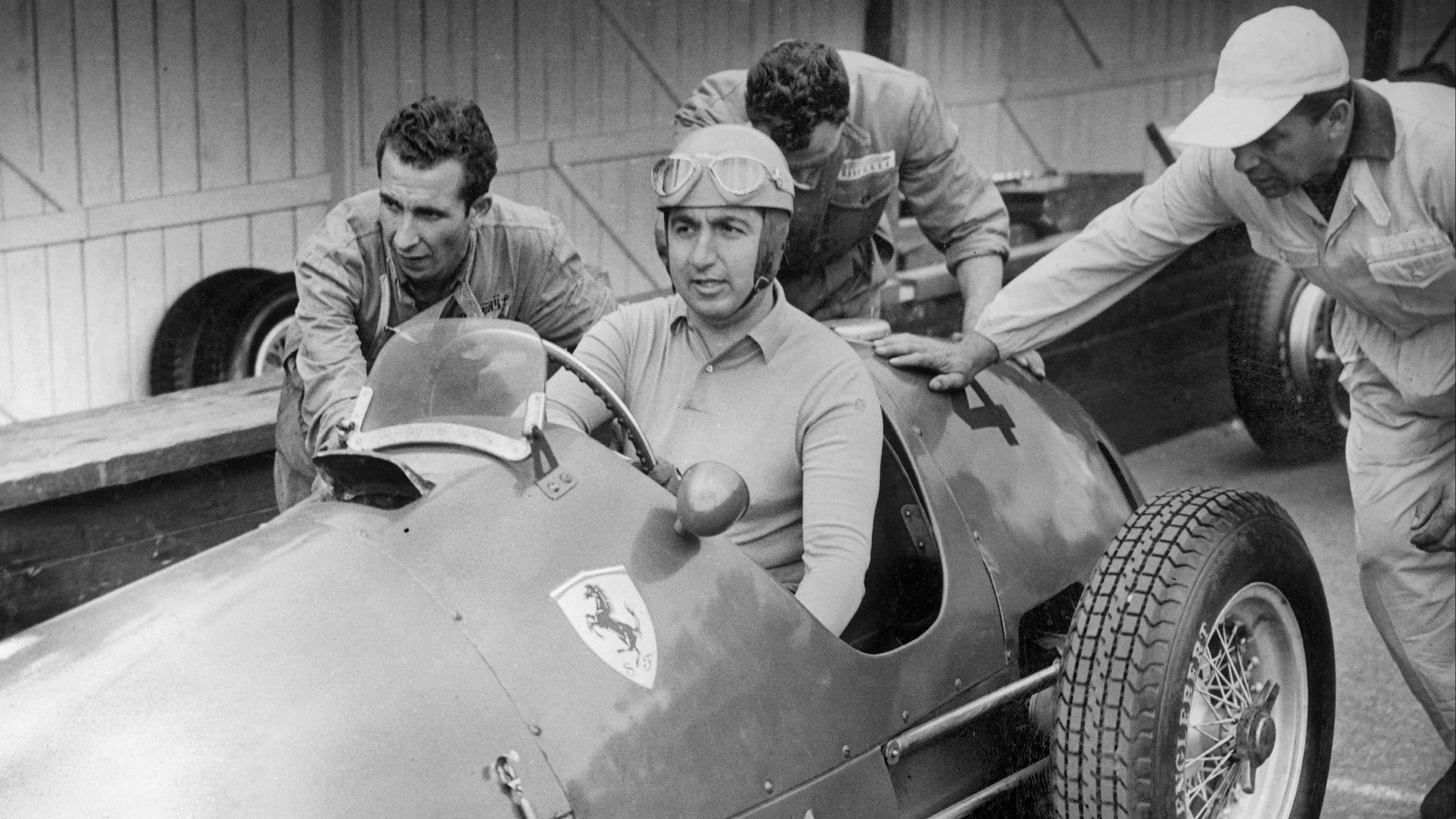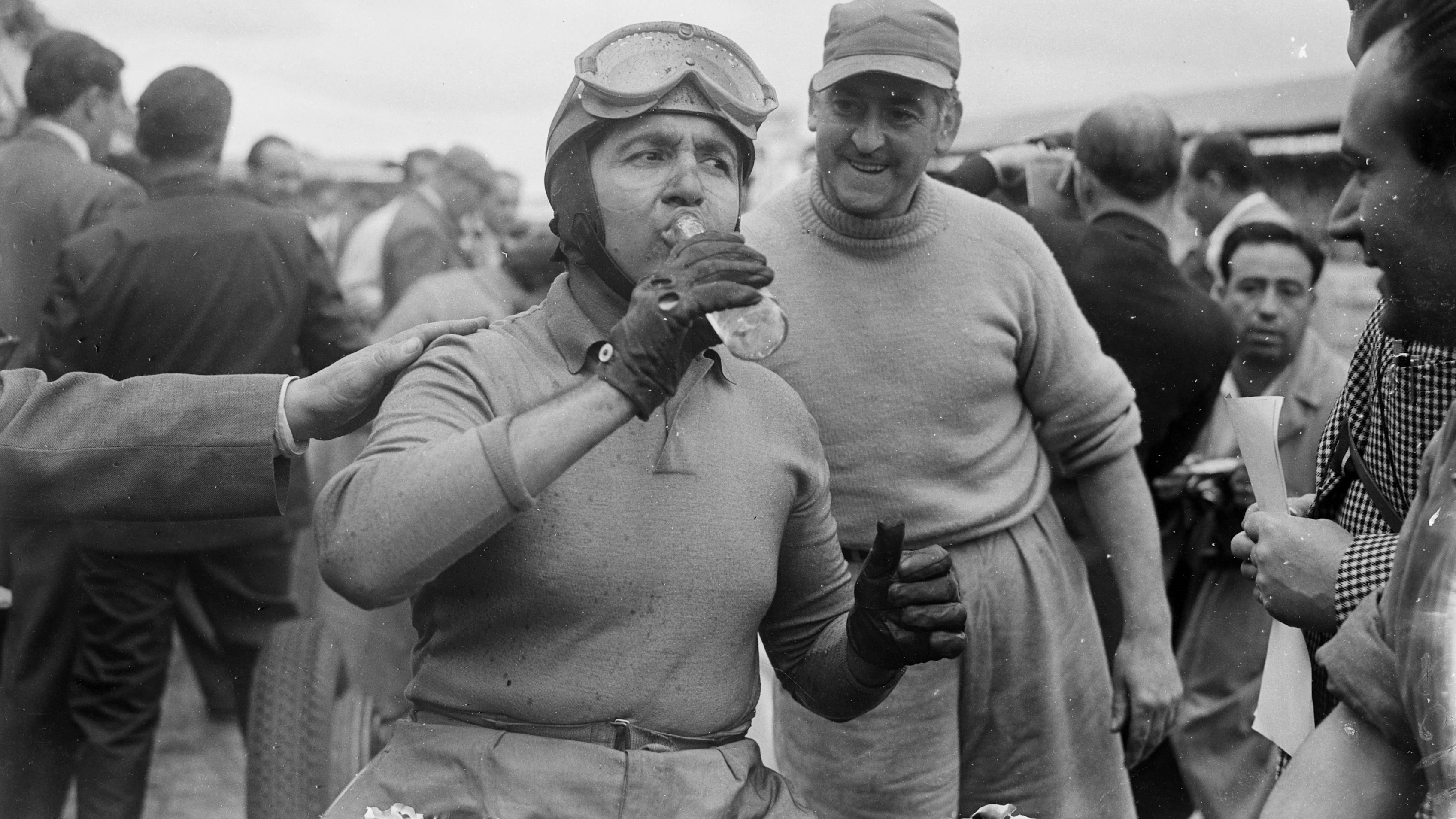HALL OF FAME - 1952, 1953
Alberto Ascari

The son of one of Italy's great pre-war drivers, Alberto Ascari went on to become one of Formula 1 racing's most dominant and best-loved champions. Noted for the careful precision and finely-judged accuracy that made him one of the safest drivers in a most dangerous era, he was also notoriously superstitious and took great pains to avoid tempting fate. But his unexplained fatal accident - at exactly the same age as his father’s, on the same day of the month and in eerily similar circumstances - remains one of Formula 1 racing’s great unsolved mysteries.
Alberto Ascari, born in Milan on July 13, 1918, was just seven years old when his famous father Antonio, the reigning European champion, was killed while leading the French Grand Prix at Montlhery. By that time little Alberto was already immersed in his father's milieu, having met the many big names in racing, including Antonio's close friend Enzo Ferrari, who frequented the thriving Ascari Fiat dealership in Milan. Despite the tragic loss of his beloved father Alberto succumbed to the lure of racing. His famous name helped get him started, though it was on two wheels, not four, when, as a 19-year-old he was hired to ride for the Bianchi motorcycle team. His first four-wheel foray came in the 1940 Mille Miglia, where Enzo Ferrari gave him a ride in a Tipo 815 Spyder. When Italy entered World War II the Ascari garage in Milan, now run by Alberto, was conscripted to service and maintain military vehicles. During the war years he also established a transport business, supplying fuel to Italian army depots in North Africa. His partner in this enterprise was Luigi Villoresi, a racing driver with whom he developed a father-son relationship. By the end of the war Alberto was a family man, having married Mietta and become the father of Patrizia and Antonio, who was named after his celebrated grandfather.

Given his family responsibilities Alberto was prepared not to race again, but Villoresi persuaded him to continue. In 1949 they became team mates in Enzo Ferrari's team, where Ascari's dominance would make him Formula 1 racing’s first back-to-back champion. In 1952 he drove his Ferrari 500 to victory in six of the seven championship races. In 1953 he again overpowered the opposition, winning five times and cruising to a second successive driving title. A great driver admired by his peers, Ascari was also a charming man idolised by a legion of admirers.
His illustrious heritage helped, as did his superlative driving skill, but his winning persona also contributed to his huge popularity. It was easy to like a hero who was so obviously no prima donna, the driver with the plump physique whom the Italian fans nicknamed 'Ciccio' (chubby), and whose open and friendly disposition was apparent from his genial smile. Even his idiosyncratic superstitions were endearing, an entirely human response to the dangers of racing. He avoided black cats like the plague, had a horror of unlucky numbers and never allowed anyone else to handle the briefcase that contained his racing apparel: the lucky blue helmet and T-shirt, the goggles and gloves.

But perhaps he also had inner demons, for he was a chronic insomniac and prone to stomach ulcers. Enzo Ferrari, who knew Ascari was deeply devoted to his family, once asked him why he didn't demonstrate his affection. "I prefer to treat them the hard way," Alberto said. "I don't want them to love me too much. Because they will suffer less if one of these days I am killed."
Such an eventuality seemed most unlikely for a driver who always strictly observed self-imposed safety margins, who studiously avoided exceeding the limits of his car or himself, and whose relaxed and smooth style looked so effortless as to suggest he would have plenty of skill in reserve to correct any rare mistake.
Following his runaway championships he moved to Lancia for, he admitted, more money than Ferrari was prepared to pay him. Having been sidelined for most of 1954 because the Lancias were not yet raceworthy he embarked on an ill-fated 1955 campaign. In the Monaco Grand Prix Ascari's leading Lancia D50 suddenly swerved out of control in the harbour chicane, flew into the Mediterranean and sank, its disappearance marked only by a stream of bubbles and an oil slick. Half a minute later, the familiar light blue helmet bobbed to the surface and Ascari was hauled aboard a rescue launch manned by frogmen. In the Monaco hospital, where he was treated for a broken nose, bruises and shock, Ascari seemed as embarrassed as he was thankful for his miraculous escape.
Four days later he unexpectedly appeared at Monza to watch a practice session in which Eugenio Castellotti was testing a Ferrari sports car they were scheduled to share in a forthcoming endurance race. Ascari surprised everyone by announcing he wanted to do a few laps to make sure he had not lost his nerve. He was wearing a jacket and tie and had left his lucky blue helmet at home, so he borrowed Castellotti's white helmet and set off around Monza. On the third lap the Ferrari crashed inexplicably and Alberto Ascari was killed.
Had he suffered a blackout, a legacy of his Monaco accident? Was there a sudden gust of wind, had his flapping tie momentarily obscured his vision? Had he swerved suddenly to avoid a wandering track worker, or an animal, perhaps a black cat?

The eerie certainties were that Alberto Ascari died on May 26, 1955, at the age of 36. Antonio Ascari was also 36 when he died, on July 26, 1925. Both father and son had won 13 championship Grands Prix. Both were killed four days after surviving serious accidents. Both had crashed fatally at the exit of fast but easy left-hand corners and both left behind a wife and two children. A distraught Mietta Ascari told Enzo Ferrari that were it not for their children she would gladly have joined her beloved Alberto in heaven.
All of Italy mourned the loss and on the day of the funeral in Milan the whole city fell silent, as a solemn procession carrying the fallen hero moved slowly through the streets lined with an estimated one million silent mourners dressed in black. It required 15 carriages to carry the profusion of wreaths and flowers, and in the hearse, drawn by a team of plumed black horses, his familiar light blue helmet lay on top of the black coffin. And in the Milan cemetery Alberto Ascari was laid to rest next the grave of his father.
Text - Gerald Donaldson